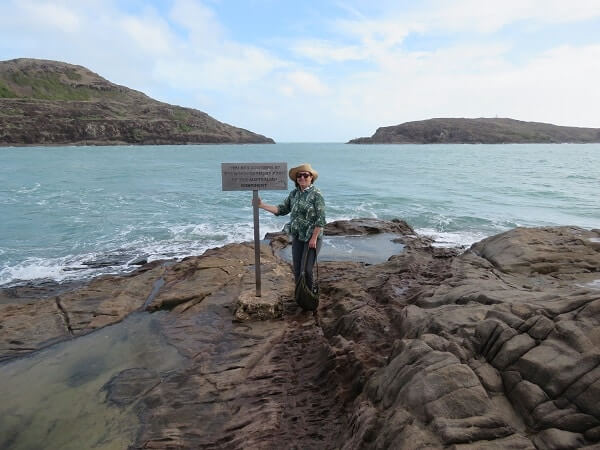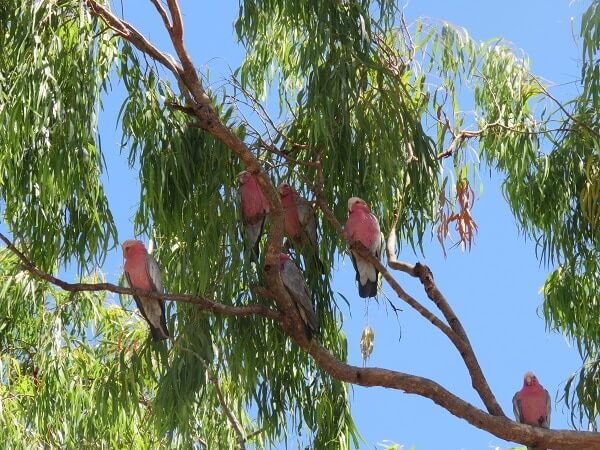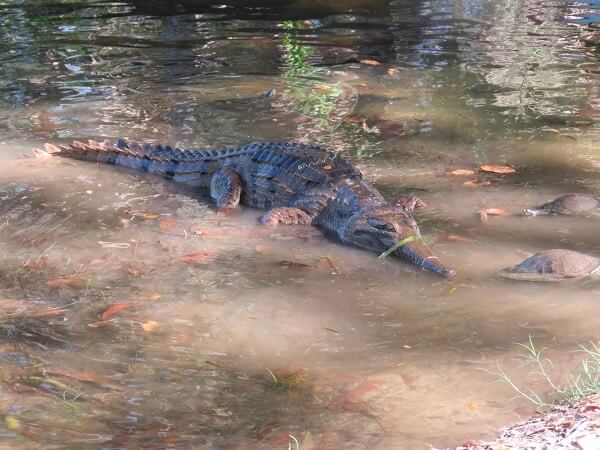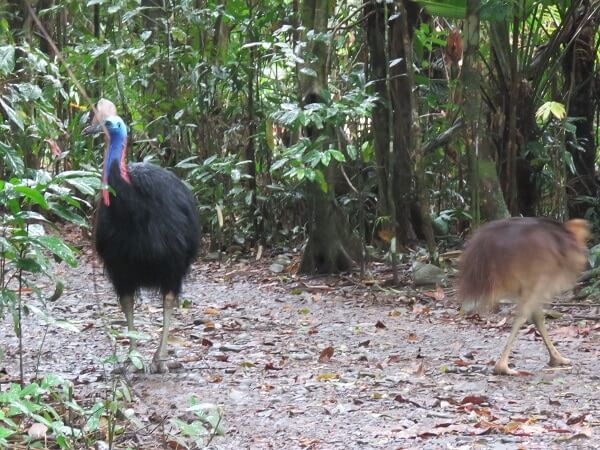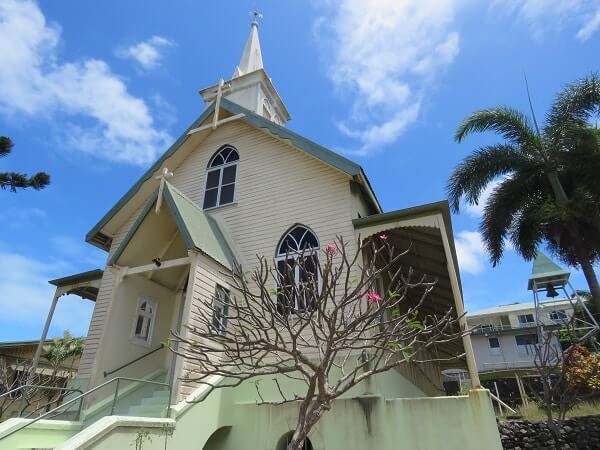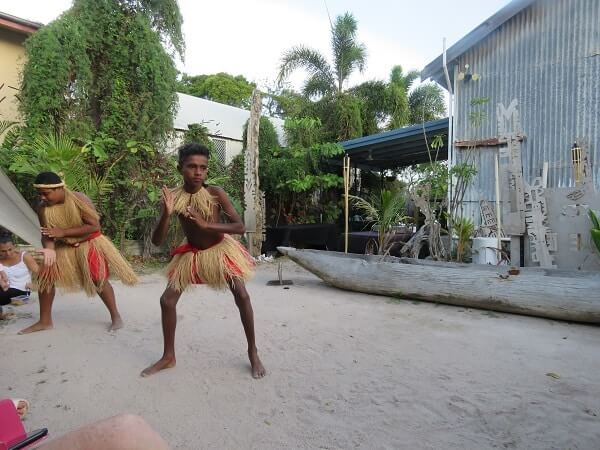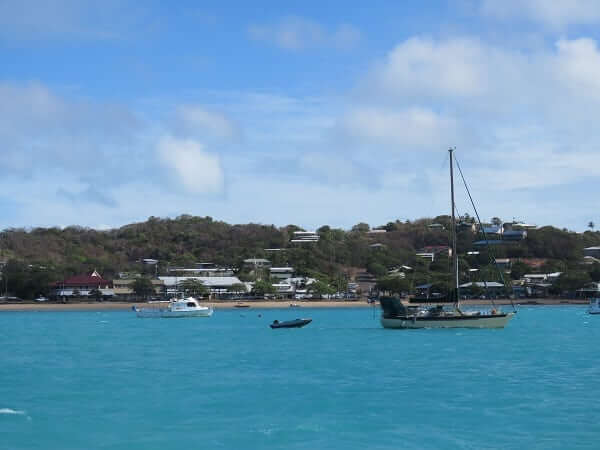The Cape York Peninsula is at the pointy end of Far North Queensland and lies just beyond historical Cooktown. Remote and sparsely populated, with billabongs, raging waterfalls, wild rivers, and rugged terrain, it’s a frontier wilderness that few ever experience.
I joined a 13-day small group tour with Outback Spirit, an experienced outback touring company, where we discovered the Daintree Rainforest, saw world famous rock art, and ended our trip at breathtaking Thursday Island.
After crossing the Daintree River by ferry on Day 1, we entered the Daintree National Park, a pristine ancient old growth rainforest, that stretches north to Cape Tribulation. The bitumen road soon gave way to a dirt track with boulders and crater sized potholes that caused us to sway in our 4WD touring vehicle, as we made our way towards our lunch destination.
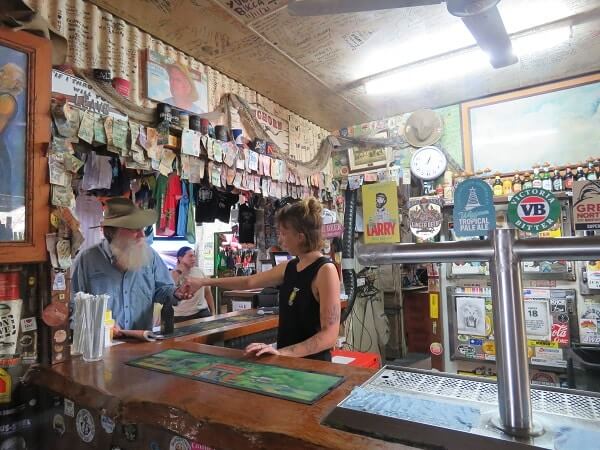
The first stop was the historic Lion’s Den Hotel, built of rough sawn timber and corrugated iron, and is the perfect place where you can have a yarn with the locals, enjoy an Aussie BBQ, and view the fascinating historic photos and memorabilia that decorate the walls.
In 1770 Captain James Cook’s ship, the Endeavour, struck a reef while charting Australia’s coastline. The place where repairs were undertaken was later named Cooktown. After gold was discovered there in 1872, the settlement grew. The same historic charm remains, with broad tree-lined streets, historic timber buildings, a museum, botanic gardens, and spectacular views of the coastline.
The next day we departed to the Old Laura Homestead which was built on the banks of the Wenlock River, by pioneers in 1879 who established the cattle industry in Far North Queensland. We then continued onto Laura to meet our Indigenous guide for an interpretative tour of the rock art dating back 30,000 years. Laura is considered a world-renowned place for rock art, ranking within the top ten rock art sites globally.
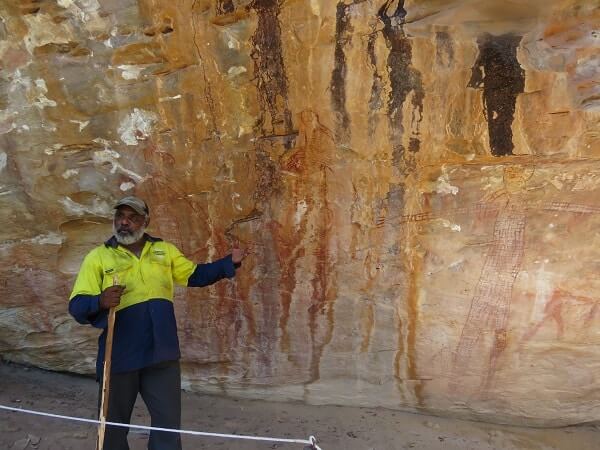
Driving past termite mounds, grassy plains, and open eucalypt woodlands, across rivers and creeks, we arrived at Lotus Bird Lodge. This was our base for two nights, where we stayed in beautiful log cabins that overlooked a vast lagoon filled with pink lotus flowers, on the edge of Lakefield National Park. The setting was stunning, with over 200 species of birds, including brolgas and cranes, and at dusk wallabies and water buffaloes gathered at the water’s edge.
Crossing to the western side of Cape York, we next visited Weipa, a coastal mining town which is heavily populated with FIFO workers. Weipa has significant bauxite extraction, which is done by scraping the soil by giant bulldozers and loaded onto container ships. Also known for its fishing, we joined a cruise of the Embley River, finding several large saltwater crocodiles sunning by the shoreline.
In 1887 a repeater station for the overland telegraph line was completed at Moreton Telegraph Station which played a significant role in Australia’s communication with the outside world. We spent two nights at the station exploring the surrounding woodlands of stringy bark and melaleuca, via the many walking trails throughout the property.
Heading further north we then stopped at Fruit Bat Falls. The day so hot and sultry, and the cascading waterfall so inviting, that I paddled my way fully clothed and sat on a ledge beneath it.
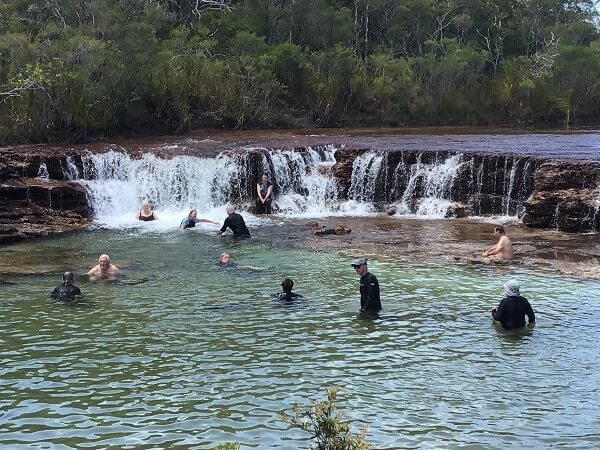
By vehicular ferry, we crossed the mighty Jardine River headed for Bamaga, a service town renowned for fishing and enticing expansive beaches, though as this is crocodile country, signs warn of the danger.
A short drive north and a walk across giant boulders leads to Australia’s most northerly point, that seems like a rite of passage. The mainland tapers to a fine point, and on reaching it, I was expecting to look out across the Torres Strait. Instead, the tip, or Pajinka (its Indigenous name), is surrounded by swift currents and 274 islands that for centuries have acted as stepping stones facilitating trade and free movement of people between New Guinea and Australia.
Torres Strait was named after the Spanish navigator who sailed here in 1606, and little has changed since then. Of the 274 islands covered with tussock grass and kapok trees, only 17 are inhabited. On all islands you’ll find turquoise waters home to dugongs, sea turtles, giant marlin, and coral reefs.
A short ferry ride away, Thursday Island was our final destination. Closer to Port Moresby than Cairns, Thursday Island has the feel of a far-flung tropical island destination, with many locals’ descendants from Malaysia, Japan and the Philippines, who came for the pearling industry, as well as from Torres Strait and Indigenous communities.
The friendly township on Thursday Island comprises two main streets that run parallel to the beach, lined with hotels, churches, general stores and cafes. Locals fish off the wharf or walk their dogs along the beach, and the island is an absolute slice of paradise with its people living together in harmony.
Overall, I found Cape York to be a pristine wilderness that allows for a better understanding of the rich cultural heritage of its indigenous owners and of their connection to country.
Travel Notebook
Getting there Fly with Virgin Australia, Qantas, or Jetstar to Cairns.
Getting around I joined Outback Spirit’s tour to Cape York departing from Cairns in a specially equipped touring vehicle. To do it yourself, you’ll need to arrange permits, and a suitably equipped 4WD all-terrain vehicle. Roads are either bitumen or unsealed that are very challenging to drive on with holes, rocks, and corrugations. Roadhouses provide fuel, basic food items and it’s important to note that camping sites should be booked well in advance.
Travel tips Best months to visit are May – Sept. Avoid summer and school holidays. Distances are deceptive as journey times slow when roads are unsealed.
Need to know Large tracts of land have been handed back to the traditional owners of Cape York by the Queensland Government, ensuring the protection of sacred sites and a return to traditional sustainable methods of land management. In 2022, 362,000 hectares were handed back. For those interested in colonial history, David Marr’s Killing for Country, discovers his forebears’ brutal past.
READ ALSO: Crossing the Nallarbor solo



